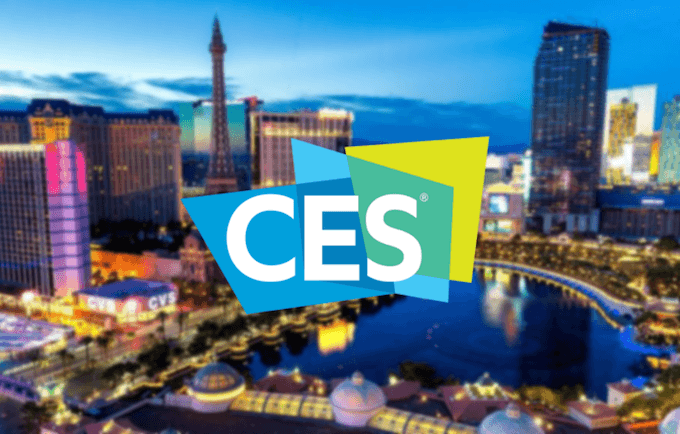Intel has a very creative start to their CES Keynote this year. The had a video that talked about Computer Intelligence (with the emphasis on Intel) and said that this intelligence wasn’t like a new lightbulb; it was more like a new kind of electricity. In other words, it is less about the device and more about the technology that makes those devices work. This is a fascinating explanation both because it looks at digital intelligence differently and because we’ve been talking about AI like we talk about lightbulbs, and that means we are undoubtedly making bad decisions about it as a result.
Let’s talk about Intel at CES this week.
Bob Swan: The Three Inflection Points
Bob Swan, Intel’s current CEO and a refreshing change from the last guy, opened with a focus on Three Inflection points defining the near-term future. These inflection points are 5G, AI, and the Intelligent Edge. Bob pointed out that Intel has been working on how to embed intelligence across their product portfolio for years, and that will define the company going forward as well, given they are still just getting started.
Autonomous Cars
Intel isn’t new to cars they’ve been working with and embedding technology into cars for years. He showed a video of a car driving in Israel, on my list of countries I never want to ride in a car in, and shared that he didn’t want to ride in the Intel self-driving car there only to find it was much less insane and much safer than being driven by a human driver. After watching the video, I still wouldn’t get into a car there, but it was an impressive demonstration of Intel’s self-driving technology.
AI For Disaster Recovery
He then showcased an AI solution was being used with joint Red Cross Intel effort for more effective disaster relief. Part of the problem in a disaster is that you can’t trust the maps, roads may be destroyed, rivers may have changed course, and bridges may no longer exist. The implementation was to use AI to determine how to get around these obstacles and find paths for the first responders in places like Australia, which are faced with horrific challenges in getting aid to people after, and especially during, a disaster.
Intelligence Transforming Business
Intel’s focus then shifted to how technology is transforming business, and they compared Netflix to Blockbuster (I’m reminded that Blockbuster was given the opportunity early on to buy Netflix, and they declined eventually being wiped out by the company). Intel is helping Netflix spread to all corners of the world. It is a decent reference because I doubt there are many in this audience that doesn’t use that service. The Netflix executive pointed out that CODECs, the technology that compresses and decompresses video, are critical to being able to provide more and better videos worldwide. Netflix had been developing their CODECs but shifted to Intel’s technology and with Intel’s help was able to go farther faster to address this critical technology advancement need.
They represented they have generated $3.5B in AI revenue in 2019. Much of Intel’s revenue comes from Inference but their recent acquisition of Habana Labs, which allows them to build a competitive training platform. Training is where an AI is created, and Inference is how it is spread to the market. They promise an up to 60% boost in both training and inference in 2020. You’ll likely first see this during the 2020 Olympics, where Intel technology will be used to do 3D Athlete Tracking, which will be used for event replays. Similar technology will be used to assist with Olympic Athlete Tracking, and Ashton Eaton, who is a 3-time gold medalist, came on stage to talk about how important this technology will be for training. He is working at Intel on this technology (this is considered an uncommon best practice, include a user on the team to help develop the technology). This technology will bring precision analysis to athletic performance, so the trainer and athlete can find those small differences that differentiate a winner from other competitors.
Now going beyond training, Intel is also working on coming up with technology that will allow athletes to better compete with eSports in terms of providing stronger user interaction with the sports content. This will give a viewer the ability to look at any event on a sports field from the angle and with the resolution that the viewer chooses. This could make it interesting for folks that want to argue with refs because the result should be a better view for the user than a referee typically gets. I can see this pulling referees out of events like Football because they’ll be able to see better remotely than they can on the field. That is going to make throwing a flag a tad more challenging. Viewers will be able to watch plays through the eyes of players without putting a camera on the players; the technology adjusts for the POV (point of view).
Project Athena
This is a project by Intel to tune, test, and verify personal technology products to ensure they provide the best experience in the industry. This is like a quality certification. One of the products they showcased was HP’s Dragonfly, which is what I’m using at the show, and the new version launched at the show has a built-in Tile tracker and even more ocean plastic use than the version I’m using. They showcased two high-end Chromebooks using stunning AMOLED displays.
They had Lenovo on stage who was showcasing a radical new PC design (Lenovo has been featured at every event I’ve been at so far; they are owning this show). This was their new foldable PC, and it is an amazing design watched being developed. This is one of the most impressive uses of a foldable screen I have ever seen as there is no visible crease in the middle. There was a Dell dual-screen laptop that was showcased after, but it was overshadowed by both the Lenovo and the Intel prototype that also used a foldable screen. The Intel prototype folded out into a 17” screen, which means you could travel with a 17” product that folded down into a sub-9” form factor.
Jason Levine from Adobe came on stage to showcase AI improvements to Photoshop that that will use Intel’s new desktop AI capability to massively reduce the time it takes to make major changes to images. I must admit Jason was one of the most entertaining people I’ve ever seen on stage. Suddenly I want to learn Photoshop again, and I feel sorry for anyone that ever has to speak after this guy. This is tied to Intel’s Ice Lake system, and then Intel announced Tiger Lake that will replace it. Nice job on this, and they showed the tiny U Series motherboard it will go on; this will double the graphics performance over Ice Lake. Finally, they previewed DG1 Intel’s coming discrete graphics platform, which was impressive and focused on the mobile market, which is likely where the competition will be easiest given the power limitations that define it.
Wrapping Up: Intel Came To Play
It was a decent showcase of Intel’s new capabilities and technology. You got a real sense for the power of the company though, at the end of the day of announcements, I wondered how many of my peers had already checked out before the event even started. Still, I was particularly impressed with the Lenovo folding screen laptop, and the amazing presentation from Adobe that last was truly one of the best pitches I’d ever seen, and I’ve seen a lot of pitches. Intel is showcasing they are in this to win and plan to play hard, and that is particularly important at the beginning of a new decade.
- The HP OmniBook X Flip 2-in-1 16-Inch: Your New Digital Swiss Army Knife (Now in Glorious Atmospheric Blue) - June 25, 2025
- The Open AI Avalanche: Why AMD’s Collaborative Spirit Is Outmaneuvering NVIDIA’s Empire - June 22, 2025
- Lenovo Embraces OpenBMC: A Step Towards Greater Transparency and Control in the Data Center - June 17, 2025



